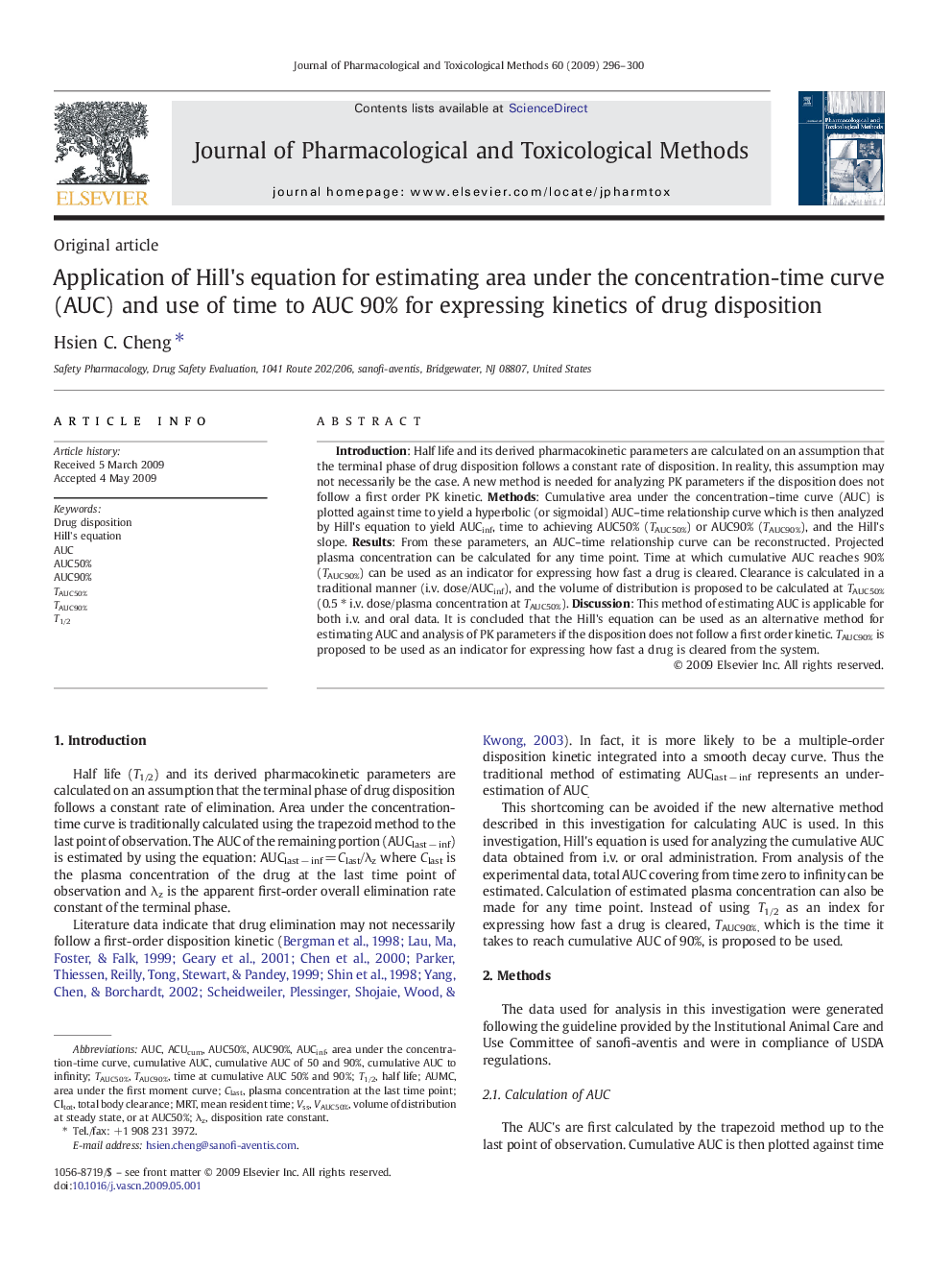| کد مقاله | کد نشریه | سال انتشار | مقاله انگلیسی | نسخه تمام متن |
|---|---|---|---|---|
| 2549669 | 1560494 | 2009 | 5 صفحه PDF | دانلود رایگان |

IntroductionHalf life and its derived pharmacokinetic parameters are calculated on an assumption that the terminal phase of drug disposition follows a constant rate of disposition. In reality, this assumption may not necessarily be the case. A new method is needed for analyzing PK parameters if the disposition does not follow a first order PK kinetic.MethodsCumulative area under the concentration–time curve (AUC) is plotted against time to yield a hyperbolic (or sigmoidal) AUC–time relationship curve which is then analyzed by Hill's equation to yield AUCinf, time to achieving AUC50% (TAUC50%) or AUC90% (TAUC90%), and the Hill's slope.ResultsFrom these parameters, an AUC–time relationship curve can be reconstructed. Projected plasma concentration can be calculated for any time point. Time at which cumulative AUC reaches 90% (TAUC90%) can be used as an indicator for expressing how fast a drug is cleared. Clearance is calculated in a traditional manner (i.v. dose/AUCinf), and the volume of distribution is proposed to be calculated at TAUC50% (0.5 ⁎ i.v. dose/plasma concentration at TAUC50%).DiscussionThis method of estimating AUC is applicable for both i.v. and oral data. It is concluded that the Hill's equation can be used as an alternative method for estimating AUC and analysis of PK parameters if the disposition does not follow a first order kinetic. TAUC90% is proposed to be used as an indicator for expressing how fast a drug is cleared from the system.
Journal: Journal of Pharmacological and Toxicological Methods - Volume 60, Issue 3, November–December 2009, Pages 296–300